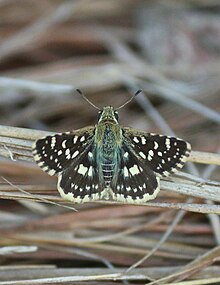
Celaenorrhinus ambareesa, commonly known as the Malabar spotted flat, is a species of hesperiid butterfly found in India.
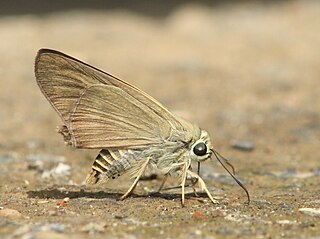
Badamia exclamationis, commonly known as the brown awl or narrow-winged awl, is a butterfly belonging to the family Hesperiidae. It is found in south and southeast Asia, Australia, and Oceania.

Bibasis gomata, commonly known as the pale green awlet, is a butterfly belonging to the family Hesperiidae. It is found in Northeast India, the Western Ghats and parts of Southeast Asia. The butterfly was reassigned to genus Burara by Vane-Wright and de Jong (2003) and is considered by them to be Burara gomata.
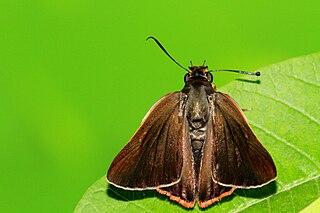
Bibasis sena, commonly known as the orange-tailed awlet, is a butterfly belonging to the family Hesperiidae, the skippers. It is also sometimes called the pale green awlet though that name can also refer to Bibasis gomata.

Hasora badra, the common awl, is a butterfly belonging to the family Hesperiidae, which is found in India.

Hasora chromus, the common banded awl, is a butterfly belonging to the family Hesperiidae which is found in the Indian subcontinent, Southeast Asia and Australia.
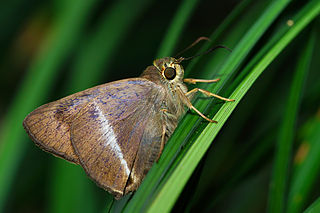
Hasora taminatus, the white banded awl, is a butterfly belonging to the family Hesperiidae, which is found in Asia.
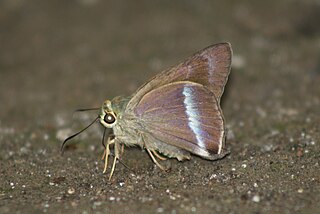
Hasora vitta, the plain banded awl, is a butterfly belonging to the family Hesperiidae which is found in India and parts of Southeast Asia.

Aeromachus dubius, the dingy scrub-hopper, is a butterfly belonging to the family Hesperiidae. It ranges from India to China, including Malaya, Assam, Myanmar, Laos, Vietnam, Hainan and Yunnan.

Aeromachus pygmaeus, the pygmy scrub-hopper is a butterfly belonging to the family Hesperiidae. The species range is from India to Burma and Thailand.

Caltoris canaraica, the Kanara swift, is a butterfly belonging to the family Hesperiidae.
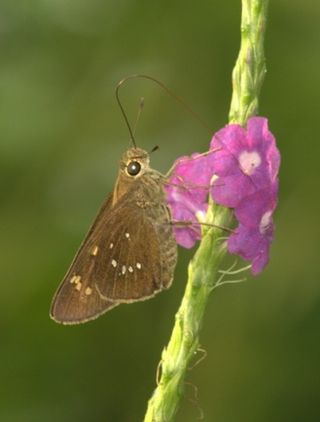
Pelopidas conjuncta, the conjoined swift, is a species of butterfly belonging to the family Hesperiidae found in India.

Quedara basiflava, the yellow-base flitter or golden flitter, is a butterfly belonging to the family Hesperiidae and is endemic to India's Western Ghats.
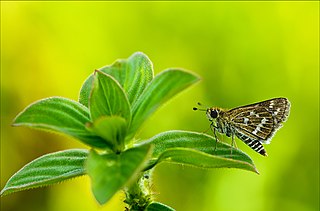
Taractrocera maevius, the common grass dart, is a species of butterfly belonging to the family Hesperiidae. It is found in India, Sri Lanka and Myanmar.
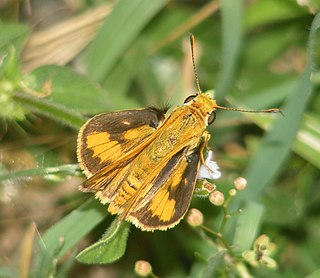
Telicota colon, commonly known as the pale palm dart or common palm dart, is a species of butterfly in the family Hesperiidae. It is found from India to Australia.

Gerosis bhagava, also known as the common yellow-breast flat, is a species of butterfly in the family Hesperiidae.
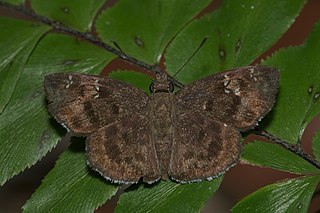
Sarangesa dasahara, also known as the common small flat, is a species of butterfly in the family Hesperiidae. It is found in the Indomalayan realm.
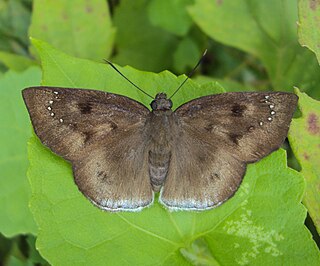
Tagiades gana, the immaculate snow flat, large snow flat or suffused snow flat, is a butterfly belonging to the family Hesperiidae found in Indomalayan realm.

Bindahara phocides, the plane, is a small butterfly found Indomalayan and Australasian realms that belongs to the lycaenids or blues family.

Spalgis epius, commonly known as the apefly, is a small species of butterfly found in the Indomalayan realm that belongs to the lycaenids or blues family. It gets its name from the supposed resemblance of its pupa to the face of an ape.


